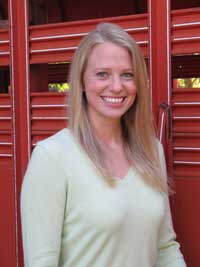PT Dry Needling
Dry Needling for Pain Relief
By: Dr. Jessica Seaburg, PT, DPT, OCS
Boundary Community Hospital Rehabilitation Services
Dry needling is a technique physical therapists (PTs) use for the treatment of pain and movement impairments. You may have heard of the “opioid epidemic” and be concerned about how to manage pain without these addictive drugs. Dry needling can be a big part of the solution. It is an effective and very safe way to resolve muscle pain without pain medicines and their side effects.
What does dry needling look like?
During the treatment, a PT will insert a very thin, solid, “dry” needle, one without medication, into a muscle. This allows the PT to target trigger points, which are taut bands of skeletal muscle that may not be treated effectively by massage. PTs wear gloves when dry needling and observe all relevant safety guidelines.
Does dry needling hurt?
The sensation experienced with dry needling is typically a deep ache or cramp, which quickly subsides within about 30-60 seconds. Often the muscle will twitch or jump as the needle is inserted.
What can I expect from dry needling?
Dry needling is like pressing a “reset button” for the muscle. People typically have immediate improvement with pain and the ability to move the problematic area. It is common to experience some mild to moderate residual soreness for 1-2 days after treatment. Most people are nervous before receiving dry needling and then say, “Wow, I’m glad I tried that!”
What conditions can dry needling help?
Because dry needling treats muscle pain, it is especially helpful for conditions such as muscle strains, trigger points, tension headaches, and post-surgical muscle pain. Many people think all their pain is coming from arthritis or disc problems, when in fact much of it is coming from their muscles – and this pain can be greatly improved with dry needling.
I’m scared of needles – can a PT help me without dry needling?
Absolutely! Dry needling is just one tool in a large toolbox. In cases when PTs use dry needling, it is one technique that is part of a larger treatment plan. PTs have a host of other effective treatment options to help reduce pain without dry needling. In my experience, however, combining dry needling with other therapeutic treatments allows patients to return to their prior level of function more quickly.
Is dry needling the same as acupuncture?
No. Dry needling is not acupuncture, a practice based on traditional Chinese medicine and performed by acupuncturists. Dry needling is a part of modern Western medicine principles and supported by research. While acupuncturists and PTs use similar types of needles, the assessment, technique, and purposes of the treatment are different.
Is dry needling safe?
Yes! PTs are experts in human anatomy and receive extensive post-graduate training to be certified in dry needling, so the risks are minimal. Your PT will thoroughly evaluate you and provide education on possible risks prior to treatment.
Want more information on dry needling?
Check out: https://www.choosept.com/dryneedling
Where can I get dry needling?
Dry needling is a specialty for Physical Therapists. You should look for someone who has completed extensive post-graduate training in “Functional Dry Needling” through KinetaCore or similar program with experience in dry needling in a rehabilitation setting.
Dr. Jessica Seaburg, PT, DPT, OCS is a Physical Therapist at Boundary Community Hospital who specializes in restoring functional movement and is a Board-Certified Clinical Specialist in Orthopedic Physical Therapy.

